For a chef building a menu, the task is to not only relay the story of a single dish to the diner, but to build a larger narrative with the menu standing as a unified whole. For chef Angelo Auriana and partner Matteo Ferdinandi of Officine Brera in Downtown Los Angeles, the larger story is that of the Po River Valley in Northern Italy, and their upbringings there.
“The menu is about memory,” Auriana tells me. “[Matteo and I] like the tastes of what we grew up with—the food our mothers and grandmothers made, and the stories they told.” Auriana grew up in the Bergamo province of Italy, and Ferdinandi grew up in Venice.
While Italian cuisine as a whole is rich in history, flavors and techniques, Northern Italian cuisine benefits from its range of terrains—(from snow-covered Alps, to the ports of Venice and Genoa—and the wealthy city-states that imported exotic ingredients from across the seas. In Piemonte, stuffed pastas (like agnolotti) became popular, as did use of local hazelnuts and chestnuts in various pastries. Veneto gave rise to asiago cheese, and seafood was a popular ingredient in dishes like baccala mantecato (a codfish appetizer) and risotto al nero di seppia (squid ink risotto). As each region developed certain traditions, local trade spread them to neighboring provinces—and the Po River was a perfect conduit. “Where there is water there is connection,” Auriana says.
But when Auriana and Ferdinandi opened their first restaurant in 2013, Factory Kitchen—also located in Downtown Los Angeles—the concept was much more sweeping. Factory Kitchen is a tour through all of Italy (North and South), with approachable pastas and entrees done in the traditional trattoria style.

Factory Kitchen was (and remains) a success, but the duo wanted something more personal and nuanced; so, in 2016, Officine Brera was born. The goal of the kitchen was to focus on Northern Italy. Everything above the Po River,” Auriana clarifies, and continues. “Brera is more rural based. We use a wood stove, serve farinata… the true Italian flavor is simplicity, and we do cucina povera [at Brera], which is the cooking of farmers—a way to subsist for the work day.”
At Officine Brera, a dish may use ingredients or techniques from Turin in Italy’s Northwest, add something from Milan, then move to Verona or Venice before finally getting a personalized twist from Auriana himself. “We want to recreate recipes as best we can,” he says. Ultimately, the menu is a something of a history lesson (well, modern history) for the Po River Valley, with each dish serving as a trip through the region.
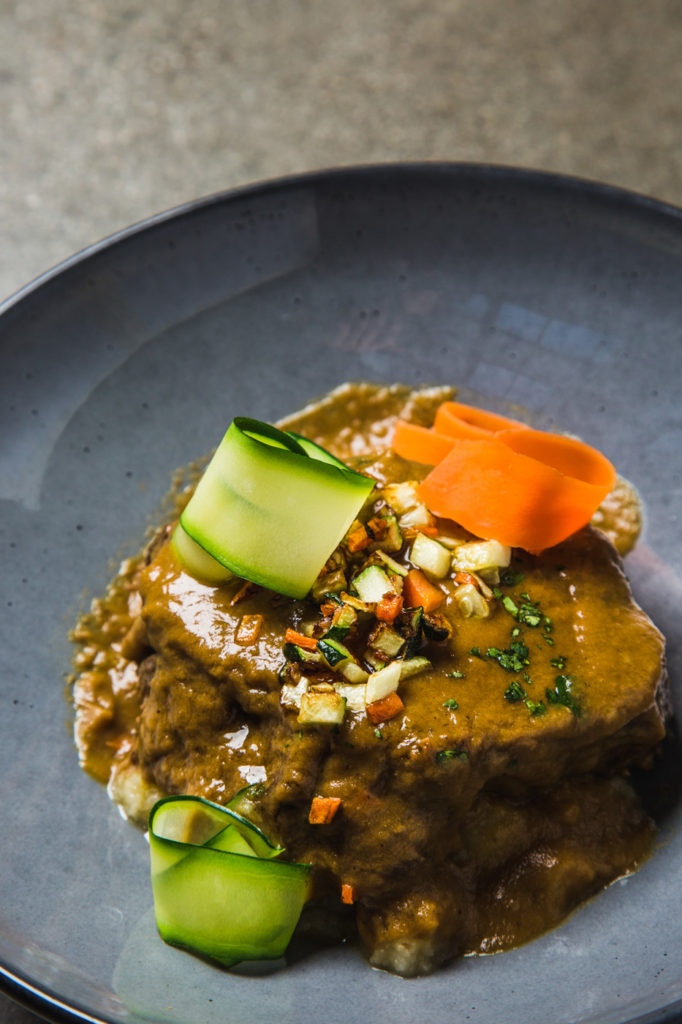
MANZO ALL’OLIO
The Manzo All’olio is a perfect example of Brera’s culinary philosophy—which takes a sort of rolling-stone-gathers-moss approach.
“The dish has its roots in the town of Rovato (east of Milan, at the foothills of the Alps) in the fifteenth or sixteenth century,” Auriana begins, noting it is one of the only non-cucina povera items on his menu. As legend has it, “Rovato had the largest meat market in Lombardi as it’s on the central road between Milan and Venice. A wealthy woman there used to cook beef shoulder for her guests.” This dish became known as manzo di rovato All’olio—at Officine Brera, the “di Rovato” is dropped, “because we get the beef from Wisconsin,” says Auriana.
The anchovy oil used in the dish comes from Genovese travellers who arrived in Rovato after a journey that could take up to a week. “They would bring food with them, and anchovies were easy to pack in salt and store,” he continues. For the elite in Rovato, exotic ingredients like anchovies were used as a way to flaunt wealth to guests. The recipe also uses white wine, as Rovato is in the Brescia province, which produces the champagne-style Franciacorta wine, and sits on a bed of potatoes, which arrived to Italy from South America likely via the Austro-Hungarian empire that controlled several Northern Italian provinces in the seventeenth century.
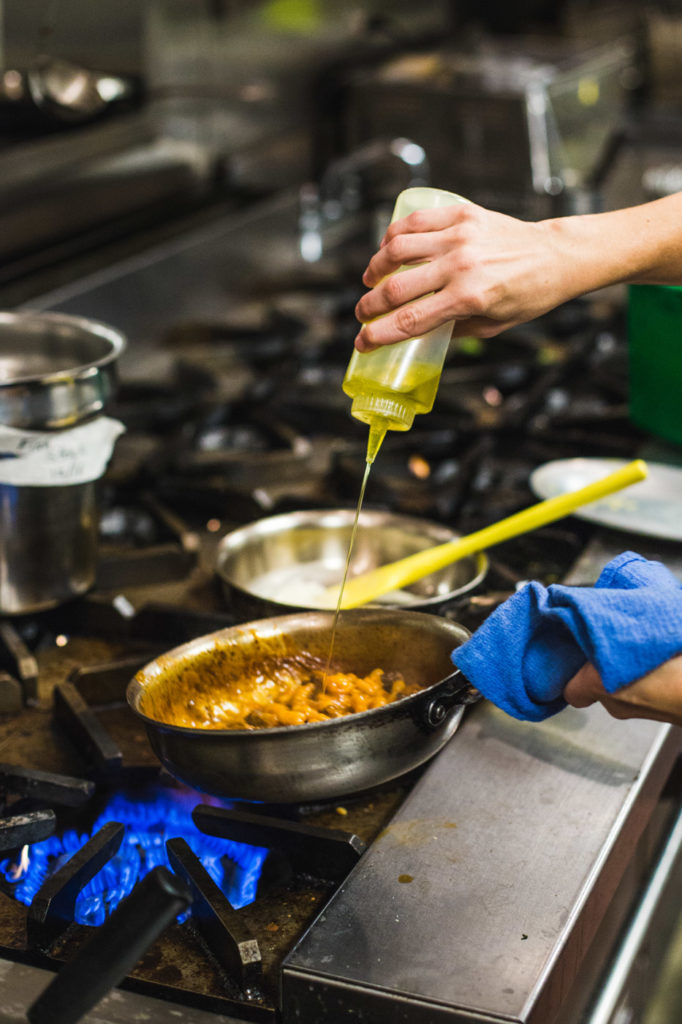
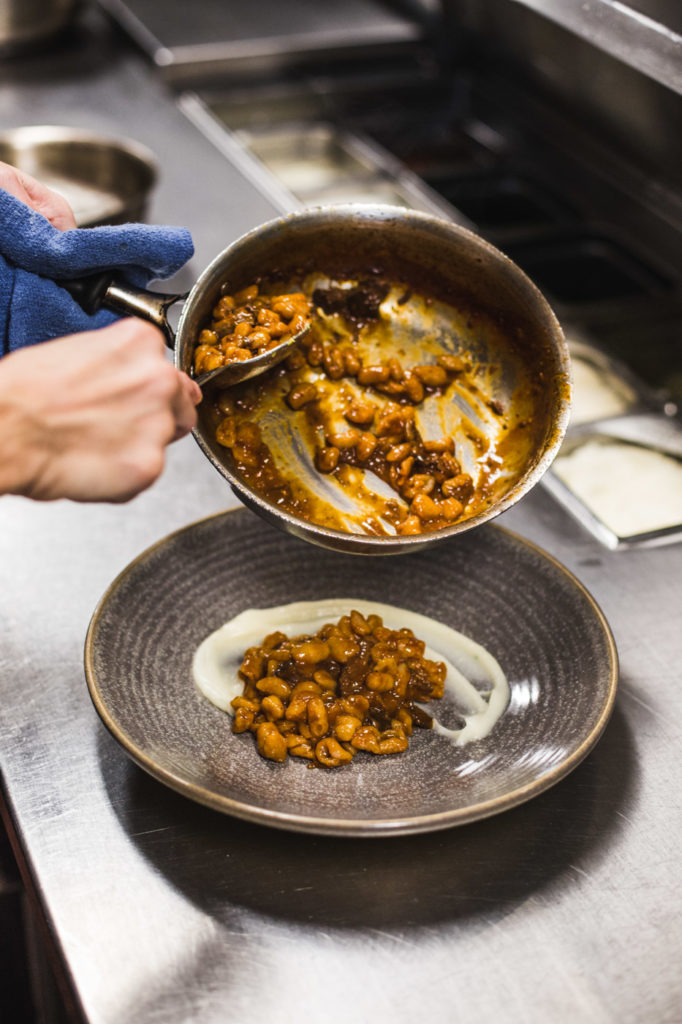
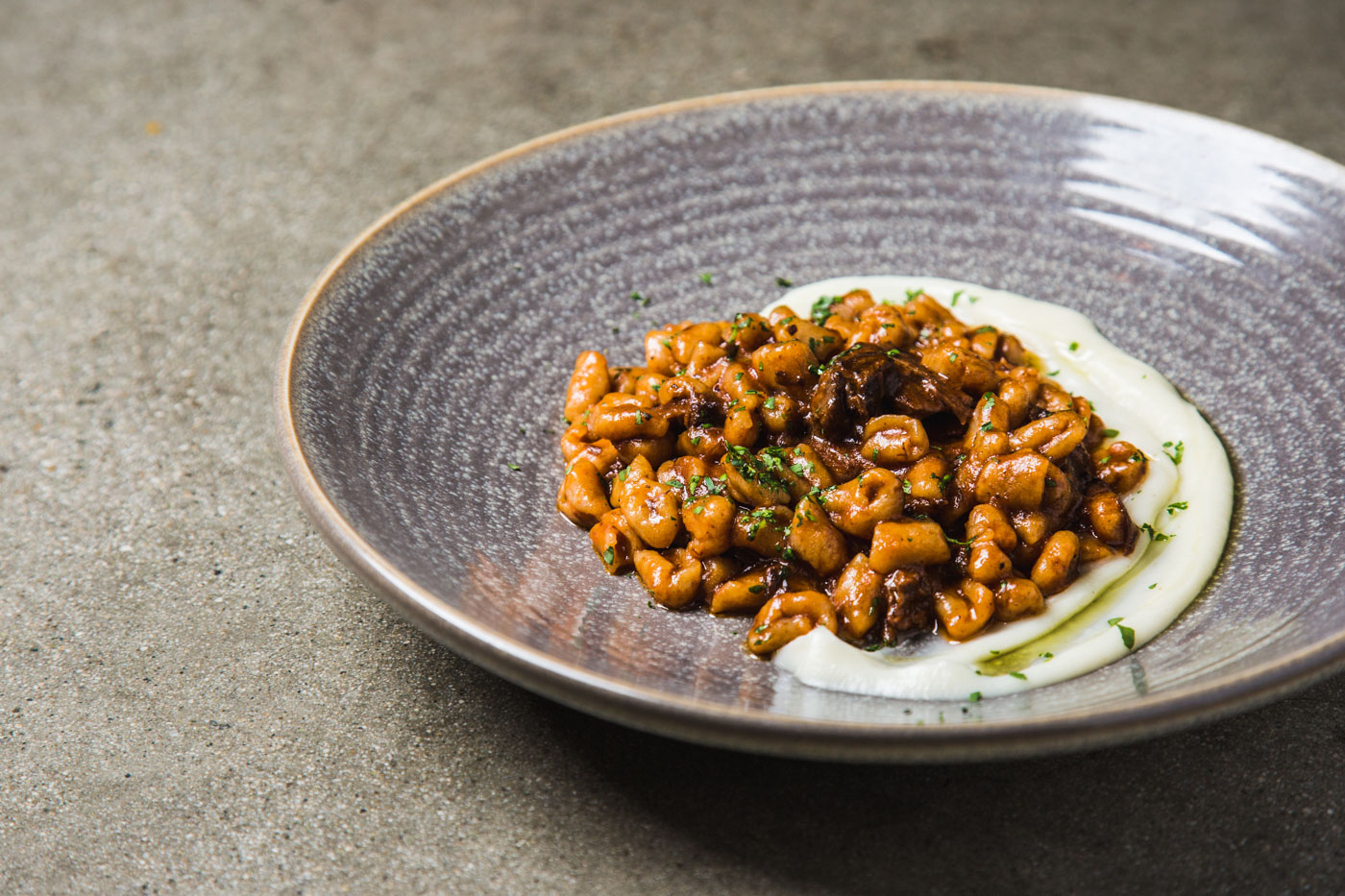
PISAREI E FASO
Pisarei e faso is a classic of cucina povera cuisine from the Piacenza province of Italy. The dish is built with ingredients found in any farmhouse: from the stale bread used to make the pisarei (a bread dumpling similar to gnocchi), to the lardo (or cooked bacon fat), to the dried beans (traditionally borlotti beans).
“Sometimes, beans were one of the only things available for farmers to eat,” Auriana says. The borlotti bean (or cranberry bean) may be associated with Italy today, but it is in fact a native of Colombia, and likely arrived through the port city of Genoa via trade with Spanish merchants returning from the New World.
As for the pisarei pasta itself, it is made with bread crumbs (“[farmers would] bake some bread in a wood oven, and then it’s good for a week or more,” Auriana explains) mixed with a bit of flour and water. The dish is not only cheap to make, but became a staple of “poor” cooking because it is filling and nutritious. At Brera, pisarei is sometimes mixed with other ingredients. “Americans like color, variation, flavor,” Auriana says of his twists. On a recent visit, he had prepared the pisarei al sugo (or “with sauce”), resting it over sunchoke purée, and replacing the lardo and beans with braised beef cheeks and sage.
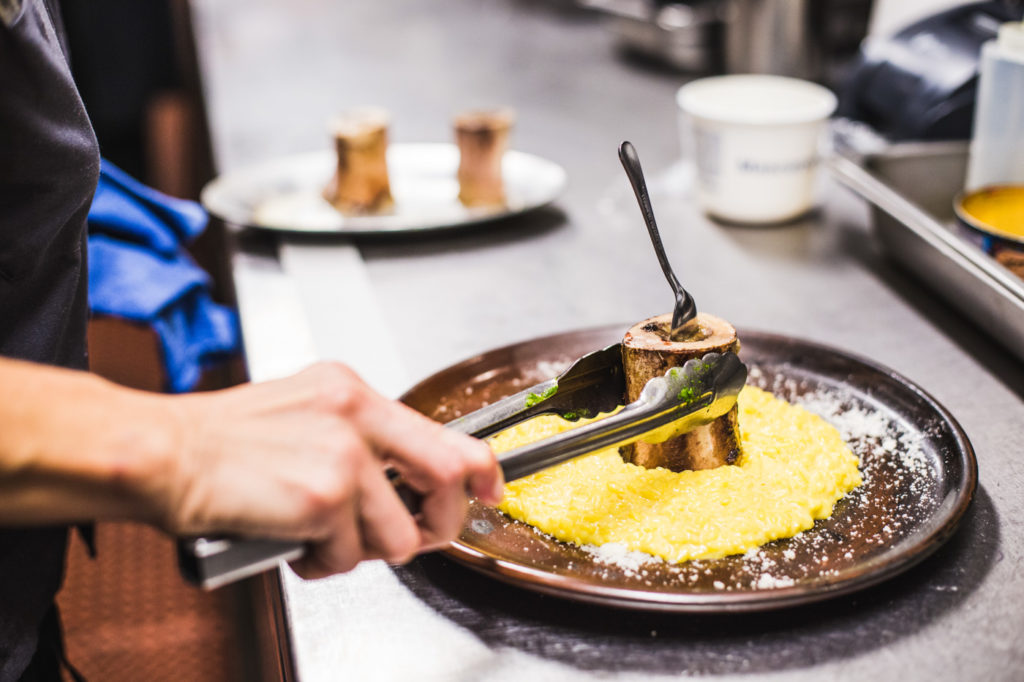
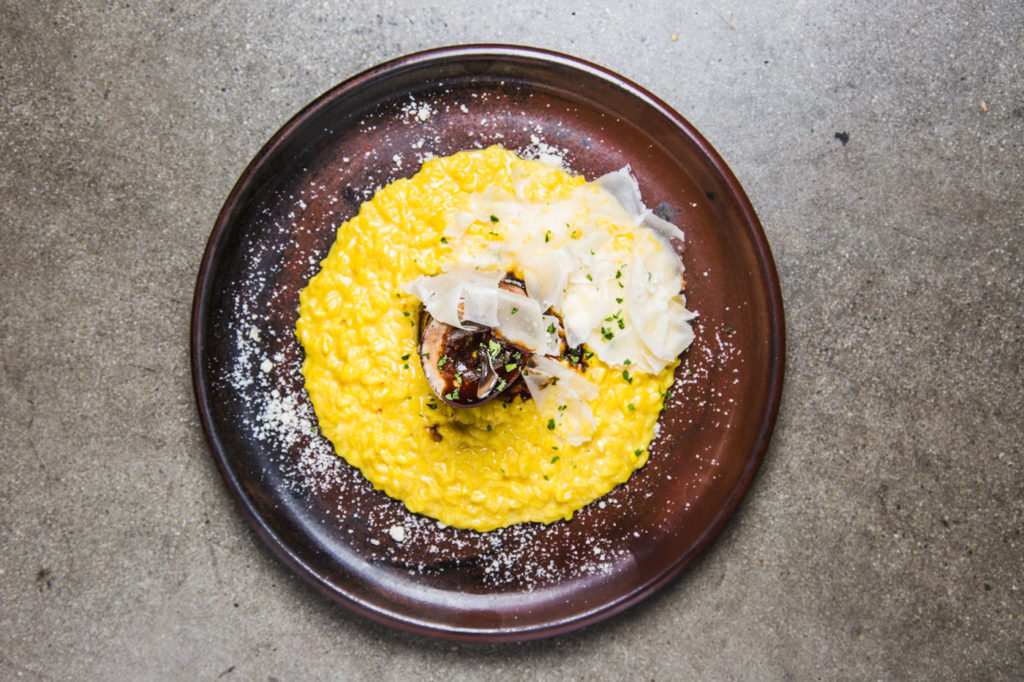
RISOTTO MILANESE
“The risotto milanese is a dish of invaders,” Auriana says. The assessment is fair, as nearly every ingredient in the recipe is the result of conquest or import.
To start with, rice is a non-native grain to Italy. Rice seems to have appeared in the country following years of conquests by Saracen Arabs that ended in the tenth century (the Saracens are also said to have introduced citrus fruits and almonds to Italy). “It might have first been in Napoli or Sicily, but rice needs hillsides to grow, like wine, and lots of water, so the north is perfect for growing it.” Vialone nano, the varietal of rice used in the risotto milanese, was developed, and only grows, in Verona.
“Risotto is usually cooked in butter, or some sort of dairy, but the risotto milanese is cooked with osso buco,” Auriana continues, noting that he cooks the bone marrow on a wood-burning stove and reduces it to a richer flavor, while adding protein to the dish. The substitution of the bone marrow for dairy also separates the dish from the cucina povera ethos of the rest of the Officine Brera menu. Risotto milanese was the food of the wealthy, as accentuated by its golden color—made gold with the use of saffron.
Saffron is another non-native Italian species. The Phoenicians spread the rare spice from Asia Minor around the Mediterranean during the time of the Romans, but the crop seems to have disappeared with the fall of the Roman Empire. It was reintroduced, albeit sparingly, during the Renaissance, primarily as a color pigment. According to legend, “during the wedding of a rich man, a painter who would use saffron for its beautiful gold pigment, added some to the risotto at the wedding banquet,” Auriana tells me. The painter is in fact usually attributed as a glassmaker who worked on the cathedral of Milan staining the glasses gold with saffron in the late 1500s, and, for whatever reason, decided to do the same to the risotto at this particular wedding.
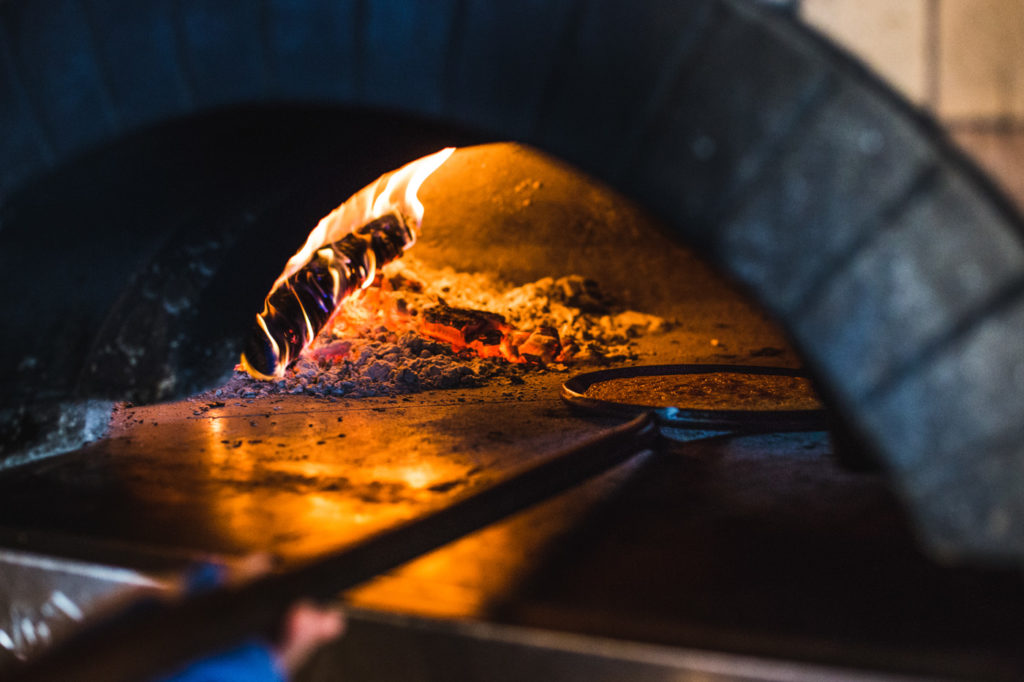
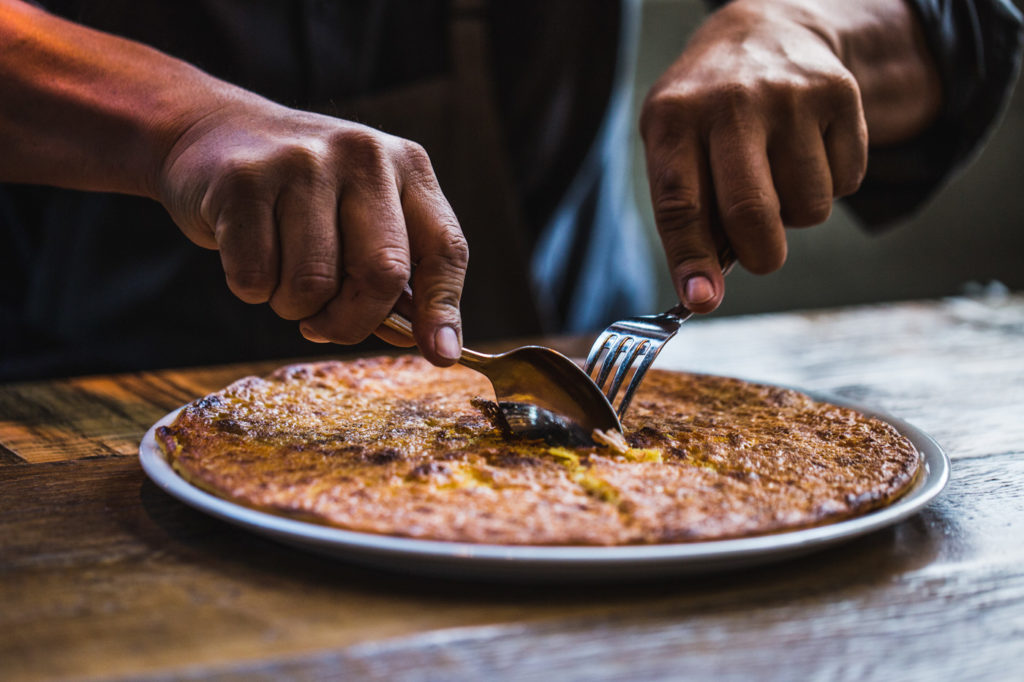
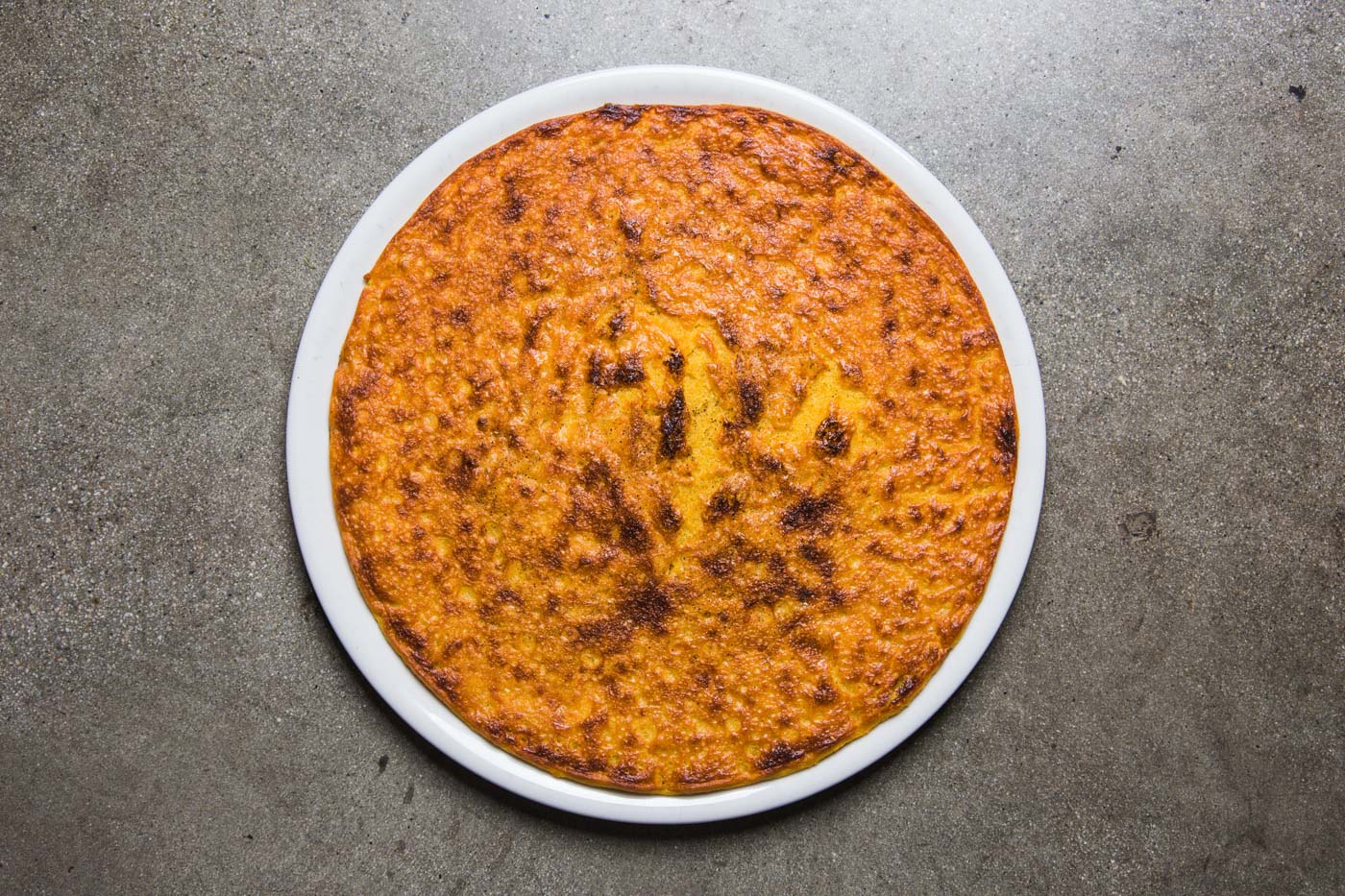
FARINATA
“Many of our dishes are unique to a region, but farinata is across the board,” Auriana explains. Farinata is a street food found across the country, and is eaten by many throughout the day in the same way a New Yorker grabs a pretzel or hot dog during a lunch break. “They sell it everywhere. You eat it with your hands. Everyone in Italy loves it.”
When Brera first opened, the idea was to serve a plate of farinata to the table where bread is served at other Italian dishes. “It’s communal, and a perfect starter with a glass of champagne,” Auriana says, describing the saltiness of the farinata balancing the sweetness of the sparkling wine.
Farinata is simple: just chickpea flour, water, salt and olive oil. But the result is a delicious, rich, earthy flavor. “That comes from the testo—the pan we cook it in,” Auriana says, although the smokey residue of Brera’s wood-burning stove also plays an important role. “They ate farinata during the Crusades, but I think it was the Roman soldiers who probably invented it. They used to carry a sack of chickpea flour with them for energy, and their shields look like a large testo. The theory is the soldiers would mix the flour with some water and olive oil and cook it on their shields in the sun.” A solid theory, and one that would explain farinata’s widespread adoption across the country, where, in Tuscany it is called cecina, and along the French coast west of Genoa it is called socca.





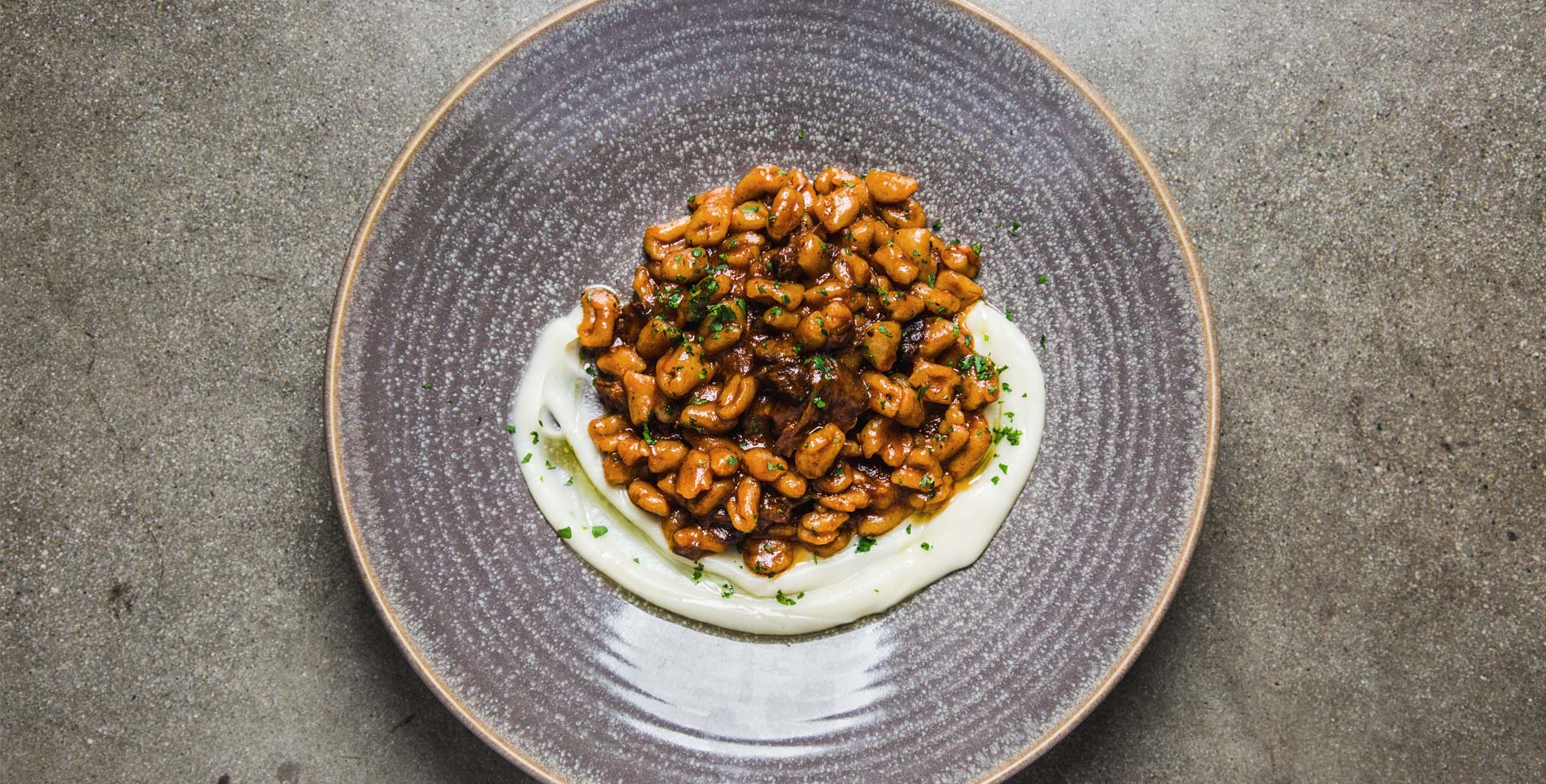

Our comments section is for members only.
Join today to gain exclusive access.